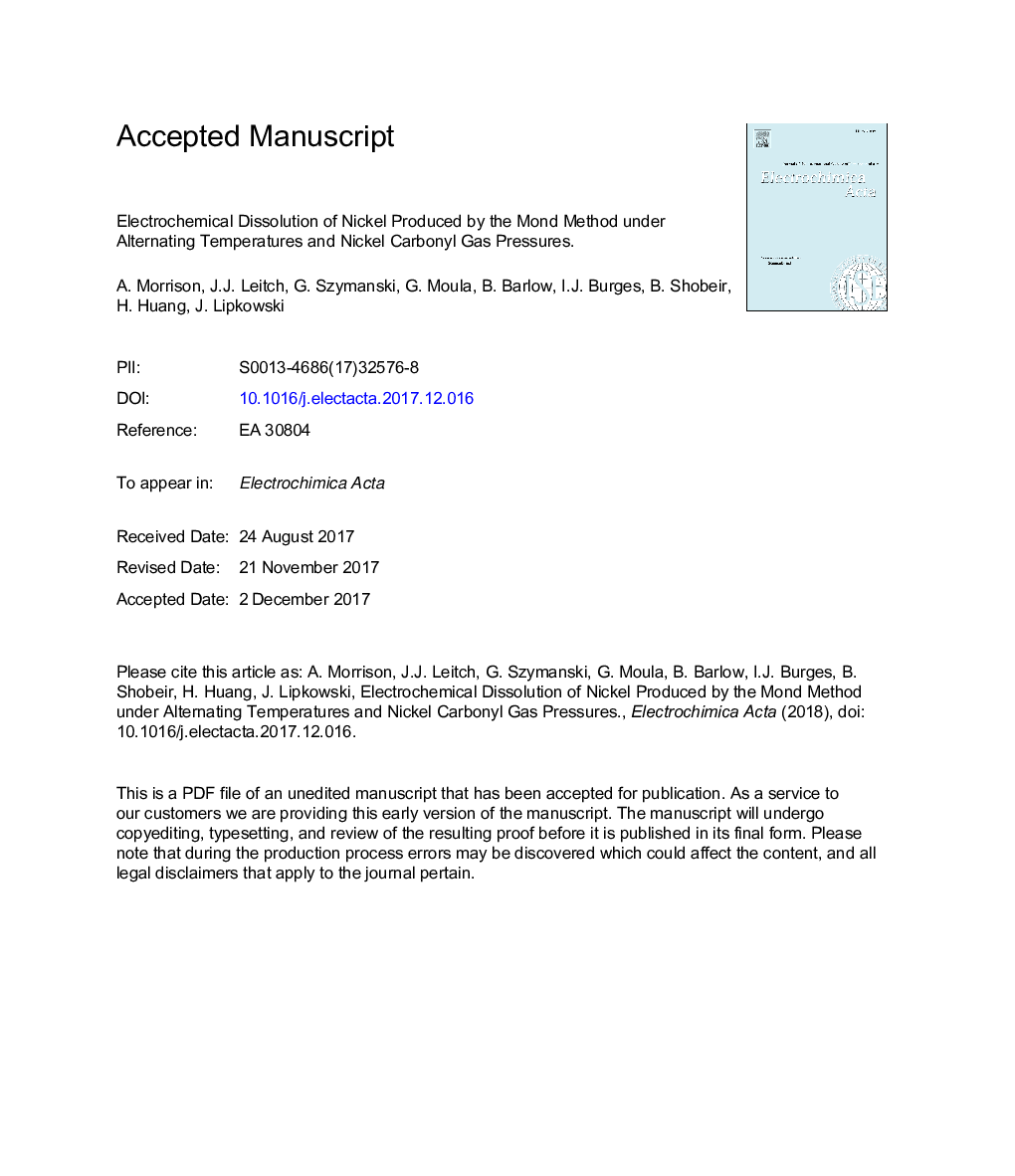| کد مقاله | کد نشریه | سال انتشار | مقاله انگلیسی | نسخه تمام متن |
|---|---|---|---|---|
| 6604969 | 1424097 | 2018 | 29 صفحه PDF | دانلود رایگان |
عنوان انگلیسی مقاله ISI
Electrochemical dissolution of nickel produced by the Mond method under alternating temperatures and nickel carbonyl gas pressures
ترجمه فارسی عنوان
انحلال الکتروشیمیایی نیکل تولید شده توسط روش مند در دمای متغیر و فشار گاز کربنیک نیکل
دانلود مقاله + سفارش ترجمه
دانلود مقاله ISI انگلیسی
رایگان برای ایرانیان
کلمات کلیدی
انحلال آنودیک نیکل، خوردگی پیت، میکروسکوپ الکترونی اسکن، نوسانات الکتروشیمیایی، ولتامتری سیسیک،
موضوعات مرتبط
مهندسی و علوم پایه
مهندسی شیمی
مهندسی شیمی (عمومی)
چکیده انگلیسی
The dissolution mechanism of nickel grown by the carbonyl process was investigated using laboratory Ni samples. These samples were purposely engineered to form an alternating lamellar structure of Ni layers grown under two limiting conditions. Three layers deposited from low nickel carbonyl gas concentrations (5%) at a decomposition temperature of 280 °C (LC/HT) were deposited between four layers formed from high nickel carbonyl gas concentrations (40%) at a decomposition temperature of 200 °C (HC/LT). These lamellar structures were used to simulate the two extremes found within an industrial decomposition chamber for nickel pellets grown using the Mond process. Cyclic voltammetry and fluctuations in the electrode potential were recorded during the 120 min constant current dissolution experiment. Complementary scanning electron microscopy (SEM) and white light interference microscopy (WLIM) measurements were used to monitor the changes in surface morphology, texture and roughness as a function of the dissolution time. The electrochemical measurements showed that the dissolution of the sample proceeded in the transpassive regime at overvoltages above 300 mV. Large oscillations were observed in the chronopotentiogram, which suggests that the passive layer breaks down and then regrows on the surface of the nickel samples. SEM and WLIM images revealed that pits with lacy coverings were formed during the initial stages of nickel dissolution. With increasing dissolution time, the LC/HT regions dissolved at a significantly faster rate than the HC/LT regions and the lacy covers were more readily removed causing the transition to an open pit dissolution mechanism. The formation of trenches at boundaries between the lamina was observed at longer dissolution times. The average depth and width of the trenches also increased as a function of dissolution time. The results from the laboratory-grown lamellar nickel samples in this study clearly show preferential dissolution at boundaries between the lamina and that the dissolution of the LC/HT regions proceeds faster than the dissolution of the HC/LT regions.
ناشر
Database: Elsevier - ScienceDirect (ساینس دایرکت)
Journal: Electrochimica Acta - Volume 260, 10 January 2018, Pages 684-694
Journal: Electrochimica Acta - Volume 260, 10 January 2018, Pages 684-694
نویسندگان
A. Morrison, J.J. Leitch, G. Szymanski, G. Moula, B. Barlow, Ian J. Burgess, B. Shobeir, H. Huang, J. Lipkowski,
